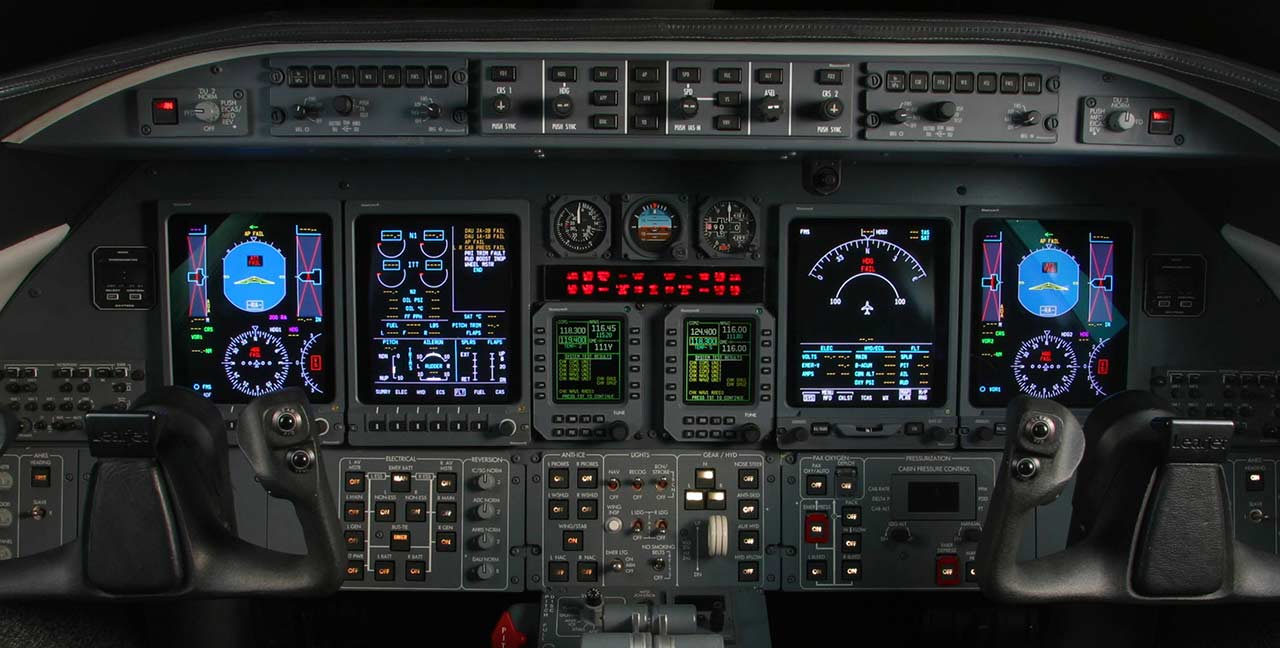RVSM / International Operation Manuals
When purchasing a new aircraft or transferring ownership of an existing aircraft, the aircraft cannot be flown between FL 290 and FL 410 until RVSM authorization has been granted by the FAA. This issuance cannot be “transferred” to a new owner after the sale of an aircraft. Due to a work force personnel reduction of FAA inspectors, the timeframe for review of a Part 91 RVSM application could be a few days or a few months. Fly Certs LLC is the only company to utilize former FAA employees who write, review, and assemble application packages. Our employees cannot approve the packages themselves but will continue to work with you throughout the process for no additional charge and complete any documentation changes if required by your FSDO.
The RVSM approval process is very time consuming and confusing. Fly Certs LLC can reduce time and frustration for aircraft owners and operators by preparing custom RVSM and International Operation manuals unique to your aircraft and operation. This can be accomplished within three business days after receiving a complete contact us to get more information. For an additional fee we then offer to assemble the application package for approval by the FAA Flight Standards District Office (FSDO) nearest to where the primary business address of the aircraft is located. If the address is located outside the United States, then your applications must be submitted to the appropriate FAA International Field Office (IFO).
What is RVSM?
Reduced Vertical Separation Minimum (RVSM) is defined as the reduction of vertical space between aircraft from 2,000 to 1,000 feet at flight levels from 29,000 feet up to 41,000 feet throughout the world. In order to fly in this airspace, operators are required to submit an application for operational approval to the appropriate State authority. The FAA issues Part 91 Letters of Authorization (LOA) and Part 135 Operations Specifications (OpSpecs) for FAA registered aircraft charter operators. RVSM approval is issued to a combination of the Operator, the qualified pilot(s) and the specific aircraft. This issuance cannot be “transferred” to a new owner after the sale of an aircraft.
History of RVSM
RVSM was implemented as a means to increase airspace capacity and access to more fuel-efficient flight levels. The International Civil Aviation Organization (ICAO) and its member states first mandated the implementation of RVSM in the North Atlantic in March 1997; with other regions around the world to follow. It allows aircraft to safely fly more optimum profiles, gain fuel savings and increase airspace capacity. The process of safely changing the separation standard required a study to assess the actual performance of airspace users under the old vertical separation standard of 2000-ft and potential performance under the new standard 1000-ft. In 1988, the ICAO Review of General Concept of Separation Panel (RGCSP) completed this study and concluded that safe implementation of the 1000-ft separation standard was technically feasible. RVSM was subsequently implemented and today RVSM represents a global standard for 1000-ft vertical separation
Operational Control
If an aircraft is operated under Part 91, it is important to determine which entity or entities are in Part 91 operational control prior to submitting an application to the FAA. (See our explanation of Part 91 operational control.) If an aircraft is to be operated under Part 91 by the owner and leased to a charter company, then both the Part 91 operator and the Part 135 operator are required to obtain appropriate operational approval from the FAA. Separate authorizations are required for each person or entity in operational control of the aircraft.
RVSM Authorization Groups
The FAA released updated inspector guidance in Spring 2014 in an attempt to streamline the RVSM review process. There are now three authorization groups for Part 91 RVSM applications:
Authorization Group I: Amend an existing LOA (ie; change in primary business address, Responsible Person or aircraft N number)
Authorization Group II: Request for a new LOA based on one or more existing approved RVSM authorization elements (ie; if the aircraft was approved by a prior operator, or the pilots were accepted under another operator’s RVSM authorization, or an existing FAA approved RVSM Maintenance Program is being used by a new operator)
Authorization Group III: New Authorization
What is Required to Meet RVSM Approval?
RSVM has now been implemented globally and requires that aircraft operating between flight levels 290 and 410 (inclusive) be RVSM approved. Monitoring an aircraft’s height-keeping performance is an important part of the RVSM approval process. Monitoring supports the safety assessment and safety oversight function that is required with RVSM implementation. State airworthiness authorities (the FAA) are responsible for verifying that an aircraft is technically capable of meeting and maintaining the stringent altimetry system performance requirements. Crews must be trained in appropriate procedures in RVSM airspace. Providing all these requirements are met, an authority (the FAA) will issue an RVSM Operational Approval. Prior to granting the RVSM approval… the FAA shall be satisfied that:
-
The vertical navigation performance capability of the airplane meets the below requirements:
- Two independent altitude measurement systems
- An altitude alerting system
- An automatic altitude control system; and
- A secondary surveillance radar (SSR) transponder with altitude reporting system that can be connected to the altitude measurement system in use for altitude keeping.
- The operator has instituted appropriate procedures in respect of continued airworthiness (maintenance and repair) practices and programs.
- The operator has instituted appropriate flight crew procedures and training for operation in RVSM airspace.
Approval Process Steps
Step 1: Certifiable Aircraft
Is your airplane is equipped for RVSM flight operations. The aircraft can be equipped by either the airplane manufacturer when new, or upgraded via an Supplemental Type Certificate (STC), or had a Service Bulletin (SB) completed on the airplane.
Step 2: Create an RVSM Manual
Part of the application requires developing a RVSM Program Manual and a RVSM Maintenance Program (if required). These manuals, along with supporting aircraft and pilot training documentation must be submitted in an application to the FAA for review. It is imperative that these applications are in a format that is easy for an FAA inspector to verify and procedurally understand. Aviation Manual Management employs current FAA inspectors who write, review, and assemble these application packages. Our inspectors cannot approve the packages themselves but will continue to work with you throughout the process for no additional charge and complete any documentation changes if required by your FSDO.
Step 3: Proof of Pilot Training
Providing proof of RVSM pilot training. For single pilot rated airplanes, at least one pilot must have received RVSM training through an FAA accepted course. For dual-pilot rated aircraft, at least two pilots must have received such RVSM training. You can receive RVSM training at a Part 142 facility or others approved by the FAA online. Proof of a training certificate is required with the RVSM application.
Step 4: FAA Review
Preparing a clean application package for submission to the FAA is critical. If the application package is confusing, misleading, or incomplete the FAA will simply return it. Submit the application to the FAA office nearest to the owner of the aircrafts primary business address. The office manager will assign an inspector to review the information submitted. An operations inspector will review the operations portion of the application. The FAA has 60 business days to review an RVSM submission. Aviation Manual Management employs current FAA inspectors who are aware of FAA inspector workloads. Our inspectors cannot approve the packages themselves but will work with the inspector who has been assigned to the approval.
Step 5: FAA Approval of LOA or Issuance of Op Specs
For Part 91 Operators, the FAA issues RVSM approval in the form of a Letter of Authorization (LOA). For Part 135 Operators the FAA issues Operations Specifications (OP SPEC’s). RVSM approval is not region specific. FAA RVSM approval for an N-registered aircraft is valid for worldwide RVSM flight operations.
Step 6: Height Monitoring Flight Documentation
Within six months of RVSM approval, you must complete (1) height monitoring flight on your aircraft (unless you can show documentation that one has already been completed). This is required by the FAA every 2 years or 1000 flight hours, whichever comes first.
Step 7: Continuing Compliance
You must keep your RVSM Program manuals and FAA approval documentation onboard the aircraft. You must maintain your airplane in accordance with your RVSM Program manuals.
REFERENCES
FAA’s Website for RVSM Operations
https://www.faa.gov/air_traffic/separation_standards/rvsm/
FAA Advisory Circular AC 91-85A
FAA 8900.1 Guidance Links
Order 8900.1 Volume 4 Chapter 1 Sec 5 http://fsims.faa.gov/wdocs/8900.1/v04%20ac%20equip%20&%20auth/chapter%2001/04_001_005.htm
Order 8900.1 Volume 4 Chapter 12 Section 1
http://fsims.faa.gov/wdocs/8900.1/v04%20ac%20equip%20&%20auth/chapter%2012/04_012_001.htm

Part 91 LOA Application Support
A Letter of Authorization is the FAA approval granted to individual Part 91 Operators for specific flight operations.
Part 135 Certification & Manual Support
Experienced guidance is essential when drafting a Part 135 Certification and Manual support. Without a well executed manual, you could be exposed to unnecessary duplication of effort greatly increasing the total certification cost


Minimum Equipment List (MEL) Support
A Minimum Equipment List (MEL) is an FAA approved document that allows an aircraft owner/operator to fly with a certain item(s) inoperative.
General Aviation Consulting Services
FlyCerts LLC is a regulatory compliance company specializing in all aspects of general aviation compliance with FAA regulations. Our products and services offer increased efficiency and productivity.

